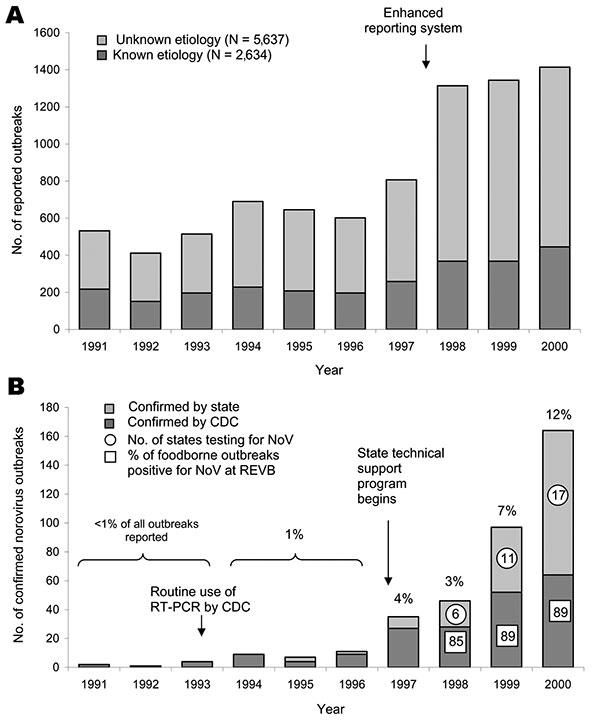Volume 11, Number 1—January 2005
Research
Norovirus and Foodborne Disease, United States, 1991–2000
Figure 1

Figure 1. A) Foodborne outbreaks reported to the Centers of Disease Control and Prevention (CDC), United States, 1991–2000. B) Norovirus (NoV)-confirmed foodborne outbreaks reported to CDC, United States, 1991–2000. REVB, Respiratory and Enteric Branch, CDC; RT-PCR, reverse transcription–polymerase chain reaction. Percentage value above bars represents proportion of all foodborne outbreaks reported to CDC that were laboratory-confirmed to be due to NoV by REVB and by some state public health laboratories.
1Efforts in 1998 to improve outbreak reporting resulted in more outbreaks being retrospectively attributed to this period. The current figures for 1993 to 1997 are 65 (2%) of 3,257 outbreaks attributable to NoV and 67% of unknown etiology.
Page created: April 14, 2011
Page updated: April 14, 2011
Page reviewed: April 14, 2011
The conclusions, findings, and opinions expressed by authors contributing to this journal do not necessarily reflect the official position of the U.S. Department of Health and Human Services, the Public Health Service, the Centers for Disease Control and Prevention, or the authors' affiliated institutions. Use of trade names is for identification only and does not imply endorsement by any of the groups named above.